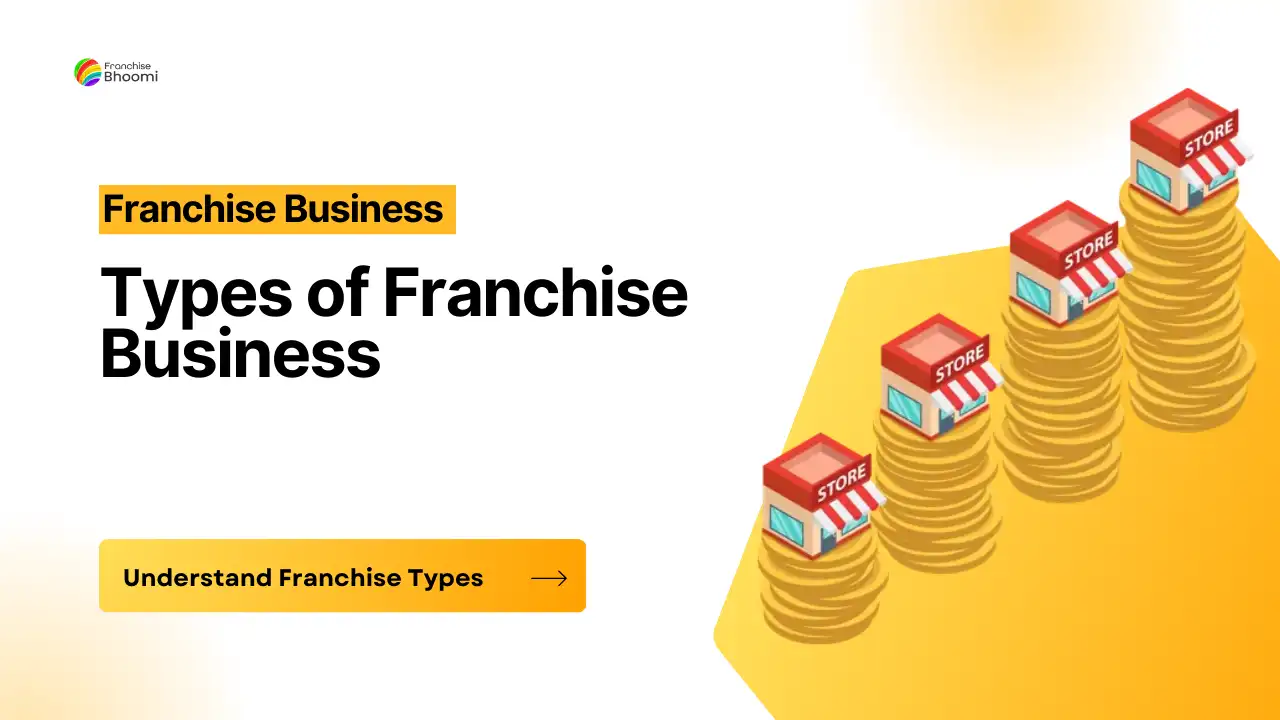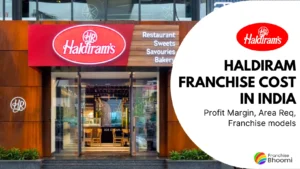Are you thinking about starting a franchise but not sure where to begin? The first thing you need to know is that there are different types of franchise models, and understanding them will help you make the right choice.
A franchise is a great way to run a business under an established brand, giving you the benefit of a proven system. But not all franchises work the same way. There are four main types of franchise models, each with its own setup, pros, and cons. Whether you want full control or prefer less hands-on involvement, knowing these options will make it easier to decide what’s best for you. Let’s dive in and explore each of these models to find the one that fits your goals.
What is a franchise business?
If you want to reap the success of a business without starting your brand from scratch, then a franchise is the right option for you.
In the business of franchising, the franchisee pays a royalty fee to the franchisor in return for having the benefit of using the franchisor’s Brand, name, product, and support.
The franchise business model creates additional options for people to become entrepreneurs and run successful businesses jointly, while also being assisted by the franchisor. This assistance aids the franchisee in operating a profitable business and making the business successful.
To Learn more: What Is a Franchise, and How Does It Work?
What is the difference between a franchisor and a franchise?
The person who manages the franchise business and owns the brand’s trademarks is known as the franchisor. The franchisee is the person who pays a fee or price to buy the rights of the franchise business of the franchisor to sell their product or services.
Every franchise business model you see is not the same as you think, the franchise business model varies on its type based on the franchisor’s decision to operate their business. Most people are not aware of the types of franchise business models available to choose the right franchise that suits them.
Hence, this post will teach you about the different types of franchise business models available.
There are four main types of franchise business models
- Company Owned Company Operated (COCO)
- Company Owned Franchise Operated (COFO)
- Franchise Owned Company Operated FOCO)
- Franchise Owned Franchise Operated (FOFO)
Types of franchise business models
Let’s breakdown the types
Company Owned Company Operated (COCO)
The company owned company-operated franchise models are businesses that are directly owned and operated by the brand. These franchise models are also called flagship models. The franchisor is entirely financing the franchise since they have the opportunity to grow their business model but were unable to locate a franchisee. The flagship model serves as a trial and error system as well. If it proves successful, it can be expanded into a franchise, and if a franchisee is interested in learning about the workings of the business, he can work there for a limited period and take on the fundamentals of the business.
Pros
- In the COCO model, the franchisor has full control of the business as there is no channel for partners.
- The COCO model has easier market penetration and the growth rate of the business is higher as major decisions such as site selection, and investments are made by the franchisor.
- The COCO franchise model is easier to grow because of the full ownership of the franchisor.
Cons:
Under the COCO franchise model, the company invests time and resources in areas outside of its primary business functions.
Examples of this model are Reliance Jio Mart, Bigbazar
Company Owned Franchise Operated (COFO)
The company-owned and franchise-operated business were the initial investment such as the property, including choosing a location and other investing funds to establish the business are incurred by the franchisor. The franchisee will manage the other operational costs such as salary, maintenance, rent, and other expenses as stated in the agreement. The franchisee’s initial investment of funds is minimal, hence the revenue split between them varies. The franchisor will receive the majority of the profits, with the franchisee receiving the minimal share. The business strategy will succeed if the franchisor wants employees to run their company and there is a chance that higher revenue will occur if the franchisee performs well.
Pros:
- The initial investment is low for the franchisee as franchise owners make the investments
- No operational cost is born by the franchisor
- The franchisor can open an outlet anywhere where he cannot find any franchisee
Cons:
- A franchisee’s profit share is limited because it doesn’t have to invest any of its own money.
- The business’s operations will be in doubt if the franchisee chooses to quit.
Example: Franchise model are call centers owned by brands
Franchise Owned Company Operated (FOCO)
The franchise Owned Company operates business models, where the franchisee makes the initial investment of the outlet, property, and other expenses, and the franchising company manages and operates the business. This franchise model is a successful business model, as most of the international food brands follow this model. The employees are trained by the franchisor and the daily operations are managed by them. This results in maintaining the brand quality and a better customer service experience. Customers are guaranteed to receive what they expect from the brand because of this control over the quality of the products and services.
Pros
- The Company will use their expertise to efficiently manage their operations
- The brand uniformity and Better customer relationship is maintained as per the brand standards
- The franchisee with the least amount of participation in the franchise operation could concentrate on the other company that owns the franchise outright.
Cons
- Due to the franchisor’s management of the operations, the franchisee has the least amount of operational exposure.
- With a large initial franchise investment, the franchisee’s profits are low.
- The profits of the franchisee are low with high initial investment in the franchise.
- Unsuitable for those looking to become franchisees by renting out real estate.
Examples of this franchise model are Aladipattiyan karupatti coffee, Waffle cart, etc.
Franchise Owned and Franchise Operated (FOCO)
The franchise-owned Franchise Operated is a form of business model, in which the franchisee bears full responsibility for the business’s success. The franchisee buys the franchise from the franchisor by paying the royal for using their trademarks, brands, and business model of the franchise. The franchisee takes charge of the operations, marketing, funding, staffing, etc. This franchise model is so popular that 85% of the franchises in India are operated under this model. This franchise model has more popularity because the franchisee has full control of the firm and ROI is higher than other franchisee models.
Pros
- This model has the potential for higher profits than other models
- Many franchise models will be found to vary on their budget.
Cons:
- The complete effort to make the business successful builds up pressure on the franchisee
- This franchisee model has a higher failure rate than other models as the complete ownership comes to the franchisee.
Example of this franchise model are – Bristo 57
Conclusion
To establish a profitable franchise, a franchisee should select a model that best fits their goals, as each franchisee model has a distinct function. If you’re still unsure about the type of franchise to buy, franchisee Bhoomi can offer you a free consultation to assist you select the one that best suits your needs and ideals.





Pingback: FOCO Franchise Model: What Is It and How Does It Work?
Pingback: Types of Business Loans in India | FranchiseBhoomi
Pingback: How to Become a Cigarette Distributor in India
Pingback: 5 Things to know Before Starting up your Franchise
Pingback: Top 5 Business Ideas Under ₹5,000 for Women
hi, there is a company registered by SHGs federation – want to establish a franchise business to sell their produce to women self help groups members. what model fits in this situation
regards
bhagya
Pingback: Business Ideas After Lockdown In India
Pingback: How to Start Vegetable Business in India 2025
Pingback: How to Start Home Decor Business in India 2025
Pingback: Nirmal Minda Net Worth: Monthly Income, Biography
been approved.
I have a property in the prime location in the heart of Banda (Uttar Pradesh)) having carpet area more than 12000 sq. Feet and I am interested in COCO franchise model.have the following spaces availables: Basement floor (2500Sq.Ft) Ground floor ( 3500Sq. Ft) Second floor (3500 sq. ft) Third floor (3500sq.Ft) We are looking to rent this property out or get into CO model, please suggest the best options lable. Waiting for positive reply Thanks
Pingback: 15+ Essential Franchise Prompts for the Franchising Business